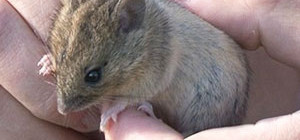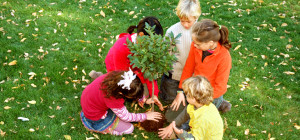 Imagine this: You have a fantastic lawn that is lush and green, filled with grass blades that glisten with the early morning dew and sway gently in the wind. One fine day, you notice that there are some patches in your lawn that are becoming thin. Gradually, you even start seeing brown patches in your perfect garden.
Imagine this: You have a fantastic lawn that is lush and green, filled with grass blades that glisten with the early morning dew and sway gently in the wind. One fine day, you notice that there are some patches in your lawn that are becoming thin. Gradually, you even start seeing brown patches in your perfect garden.
Wondering what on earth is going on here?
There are several possible culprits that are ruining your garden, but among the most common garden pests are grubs. Grub worms are notorious for destroying lawns throughout America. Learning about this threat to your garden and how to get rid of these pesky critters is critical if you want to keep your beautiful garden safe and sound.
Today, we’re going to take a closer look at lawn grubs. We will discuss what grubs exactly are, what do grubs eat, the symptoms of a grub infestation in your garden, and some tips to prevent them from festering in your lawn.
What Are Lawn Grubs?
The strange little white worms called grubs are actually various kinds of beetles in their larval stage. These creatures are considered some of the most destructive pests, especially if you have a garden covered with beautiful green grass. Most lawn grubs look similar, with fat and worm-like appearance. They have soft and delicate-looking bodies that can be easily squished.
Grubs come in various shapes and forms, and each of them goes through distinct changes in their size, colors, and shapes during the different lifecycles as they mature into beetles. Here are a few characteristics you can find in most garden grubs that should help you immediately identify them:
- All types of lawn grubs have a worm-like appearance with a dirty white or cream white color.
- Almost all grub worms have a brown or reddish-brown head.
- The tail end of grub worms appears black or a darker brown because they also ingest soil as they feed in your garden.
- Grubs curl into a C-shape position whenever they are agitated.
There are various types of grub worms. Scarab beetle grubs and June beetle grubs are quite common. Most beetle species see their adults emerge from the soil, mate, and lay their eggs over two to three weeks in early summer or the middle of summer. The time can be different depending on the specific species.
The eggs take around two weeks to hatch once the beetles lay them, and the new generation of these pests begin feasting on your garden immediately after hatching. As the grub worms mature, they keep feeding more, and the peak destruction they can cause comes in early fall. These pests primarily remain a few inches below the soil surface, eating away your garden. Grub worms burrow a little deeper as the cold winter months arrive, awaiting the next stage in their lifecycles.
What Do Grubs Eat?
Lawn grubs are notorious for destroying gardens. But have you wondered what exactly do grubs eat that they managed to completely obliterate lawns despite being underground?
From the moment they hatch, grub worms begin feeding on the grass roots and any organic matter in the soil around them. On the surface, the grass might appear to be fine, but patches start slowly forming in the garden as lawn grubs eat away their roots.
If you see irregular patches of dead grass forming on your lawn, we recommend lifting a piece of the turf. You can easily lift dead patches of grass caused by grub worms devouring their root.
Grubs love eating grass roots and organic matter, damaging your garden. Unfortunately, that’s not all the damage that they can cause to your lawn. Lawn grubs are a favorite food for several other pests, like moles, skunks, different types of birds, and more. The animals that know how to find them will dig into your garden in search of the garden grubs.
Another symptom of a grub infestation in your garden is that the grass turf becomes spongy. Sometimes, you can detect a spongy feel to the grass turf before any visible thinning or brown patches appear. Check your well-watered lawn late in spring and early summer to see if there are any spongy-feeling patches. That’s an early sign that there’s a grub infestation.
Check Your Garden For Pest Infestation
We highly recommend thoroughly inspecting your lawn every few weeks to confirm whether there are any lawn grubs or other pests, especially during late summer. Check and confirm whether there are any pests and how severe the situation is. A few grubs in your lawn are not a major problem, but you need to take action if there are too many.
A lawn with a population of zero to a few grubs is fine, but you should start getting worried if there are more than a few of them.
The best way to inspect your lawn for a grub infestation is to dig several one-square-foot sections of the sod in the garden. Dig two to four inches deep so you can uncover any grubs underneath. If there are grubs and they are feeding on the grass roots, you will see them in the soil at this depth.
Follow these tips to determine whether you should begin treating the garden for a grub infestation:
- If you find no grubs or up to five per square foot, there’s no need for treatment.
- If you find anywhere between six to nine grubs and your lawn is healthy, there’s no need to seek treatment. However, if your area has animals that love feeding on grubs and your yard is huge, you should consider treating the most used areas in your lawn. Do seek treatment for a grub infestation if the lawn is not healthy and you find this many grubs per square foot.
- If your garden has ten or more lawn grubs per square foot, it does not matter how healthy your lawn is – you need to start planning to treat your garden.
Treating Garden Grub Infestation
Lawn grubs are the most vulnerable when they are in their earliest larval stage. The younger they are, the easier they are to get rid of using pesticides. When you conduct an inspection of your lawn in late summer and early fall and find garden grubs, it’s time to get to work.
Get a curative product that kills the existing grubs by making contact with them. You can also use a preventative pesticide that destroys garden grub populations over a long time because they kill the ones that have already hatched and remain in the soil for long enough to kill those that hatch later in the season.
Most preventative pesticides for grub worms contain nitrogen fertilizer. It means that you have to ensure that your garden is well watered after you apply the pesticide. Otherwise, you can risk causing damage to the grass during the hot summer months.
A Few Tips To Prevent Grubs In Your Garden
To wrap things up, we’ll leave you with a few helpful tips to prevent grub infestations in your garden.
- Water your garden after applying pesticide: When you water the garden after applying the pesticide on the surface, the pesticide dissolves in the water and seeps into the soil with the water. Grubs also love moisture and move upward when you water the garden, making it easier for them to come into contact with the pesticide and for you to get rid of the problem.
- Mowing the Lawn:Mowing the lawnis a fundamental aspect of lawn care that involves cutting the grass to a uniform height, typically with the use of a lawnmower. This routine maintenance task offers several benefits to the health and aesthetics of your lawn.First and foremost, regular mowing encourages grass to grow thicker and healthier. It stimulates lateral growth and helps grass blades develop a lush, dense appearance. By maintaining an appropriate height, mowing also prevents the growth of weeds and unwanted plants, promoting a cleaner and more manicured look.
- Keep a check on your neighbors: Keep a close eye on the lawns around your property. If any of your neighbors have a grub problem, it is likely for the beetles that emerge to spread out and begin breeding in your garden. Point out the problem to your neighbors if you see a grub infestation and offer them tips to help them rid of lawn grubs.
- Hire professional help: Hiring grass cutting services means that you can enroll the help of professionals who can help you keep a check on your garden with a closer look. They can point out any possible infestations your lawn might have and you can make timely decisions for preventing major problems due to garden grubs.
Once you’re done repairing any damage caused by garden grubs, it’s time to rebuild, repair, and recover. Simply reseed all the patches of dead or brown grass and take good care of those areas to watch the grass grow again and form a beautiful, green, and even carpet of healthy grass blades embellishing your beautiful garden.
Did you find this guide to garden grubs helpful? Check out Gardening Made Easy to read more helpful tips about garden care that can teach you everything you need to know if you want to maintain a healthy, pest-free, and beautiful garden. Happy gardening!







